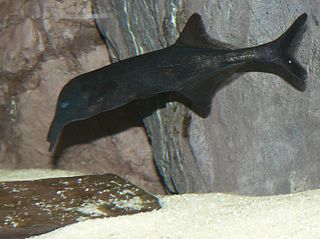
Lavandula is a genus of 47 known species of flowering plants in the mint family, Lamiaceae. It is native to the Old World and is found in Cape Verde and the Canary Islands, and from Europe across to northern and eastern Africa, the Mediterranean, southwest Asia to India.

Philip Henry Gosse FRS, known to his friends as Henry, was an English naturalist and populariser of natural science, virtually the inventor of the seawater aquarium, and a painstaking innovator in the study of marine biology. Gosse created and stocked the first public aquarium at the London Zoo in 1853, and coined the term "aquarium" when he published the first manual, The Aquarium: An Unveiling of the Wonders of the Deep Sea, in 1854. His work was the catalyst for an aquarium craze in early Victorian England.

Sir Edmund William Gosse was an English poet, author and critic. He was strictly brought up in a small Protestant sect, the Plymouth Brethren, but broke away sharply from that faith. His account of his childhood in the book Father and Son has been described as the first psychological biography.

Gosses Bluff is thought to be the eroded remnant of an impact crater. Known as Tnorala to the Western Arrernte people of the surrounding region, it is located in the southern Northern Territory, near the centre of Australia, about 175 km (109 mi) west of Alice Springs and about 212 km (132 mi) to the northeast of Uluru. It was named by Ernest Giles in 1872 after Australian explorer William Gosse's brother Henry, who was a member of William's expedition.

Sabellidae, or feather duster worms, are a family of marine polychaete tube worms characterized by protruding feathery branchiae. Sabellids build tubes out of a tough, parchment-like exudate, strengthened with sand and bits of shell. Unlike the other sabellids, the genus Glomerula secretes a tube of calcium carbonate instead. Sabellidae can be found in subtidal habitats around the world. Their oldest fossils are known from the Early Jurassic.

The yellow-shouldered grassquit is a species of bird in the tanager family Thraupidae that is endemic to Jamaica. It is the only member of the genus Loxipasser. Its natural habitats are subtropical or tropical moist lowland forest, subtropical or tropical moist montane forest, and heavily degraded former forest.

Oryzomys antillarum, also known as the Jamaican rice rat, is an extinct rodent of Jamaica. A member of the genus Oryzomys within the family Cricetidae, it is similar to O. couesi of mainland Central America, from where it may have dispersed to its island during the last glacial period. O. antillarum is common in subfossil cave faunas and is also known from three specimens collected live in the 19th century. Some historical records of Jamaican rats may pertain to it. The species probably became extinct late in the 19th century, perhaps due to the introduction of the small Asian mongoose, competition with introduced rodents such as the brown rat, and habitat destruction.
Emily Bowes Gosse was a Victorian painter and illustrator, and writer of evangelical Christian poems and tracts.

Retroculus is a genus of cichlids native to tropical South America, where three are native to rivers in southeastern Amazon Basin in Brazil, while the final is native to rivers in Amapá (Brazil) and French Guiana. It is the sole genus included in the subfamily Retroculinae, although some authorities classify this as a tribe, Retroculini, of the subfamily Cichlinae. These rheophilic cichlids are superficially similar to Geophagus.

Alexander Hay was a South Australian merchant, pastoralist and politician.

Sagartiidae is a family of sea anemones.

Campylomormyrus is a genus of elephantfish in the family Mormyridae.

Sagartia is a genus of sea anemones in the family Sagartiidae. The genus was first described by Philip Henry Gosse in 1855 and the image is his painting of several species found in British waters included in his book, A history of the British sea-anemones and corals.

Peachia is a genus of sea anemone in the family Haloclavidae. Members of this genus typically burrow into soft substrates. The only part of the animal that is normally visible is the oral disc and tentacles which lie flat on the sand in a star shape. The type species is Peachia cylindrica.
William Alford Lloyd (1826–1880) was an English self-taught zoologist who became the first professional aquarist.
Neofabricia is a genus of shrubs and small trees in the family Myrtaceae, first described as a genus in 1788, with the name Fabricia. This, however, was an illegitimate homonym, in other words, someone had already used the name to refer to a very different plant. Therefore, this group in the Myrtaceae was renamed Neofabricia. The entire genus is endemic to Queensland.
- Neofabricia mjoebergii(Cheel) Joy Thomps.
- Neofabricia myrtifolia(Gaertn.) Joy Thomps.
- Neofabricia sericisepalaJ.R.Clarkson & Joy Thomps.

Eumops ferox, the fierce bonneted bat or the chestnut mastiff bat, is a species of free-tailed bat found in the Caribbean and Mexico. Until recently, it was synonymous with Wagner's bonneted bat.
Henri Jekel was a French coleopterist.












